Running Shoes: Advice
Read More >
You will inevitably pick up some form of injury during your running endeavours due to the high-impact nature of the activity. Overuse and overload injuries are the most common causes of pain when running alongside ankle sprains, but these are few when running on flat smooth surfaces.
This article will explore 5 significant injuries that can cause your ankle to hurt when you run.
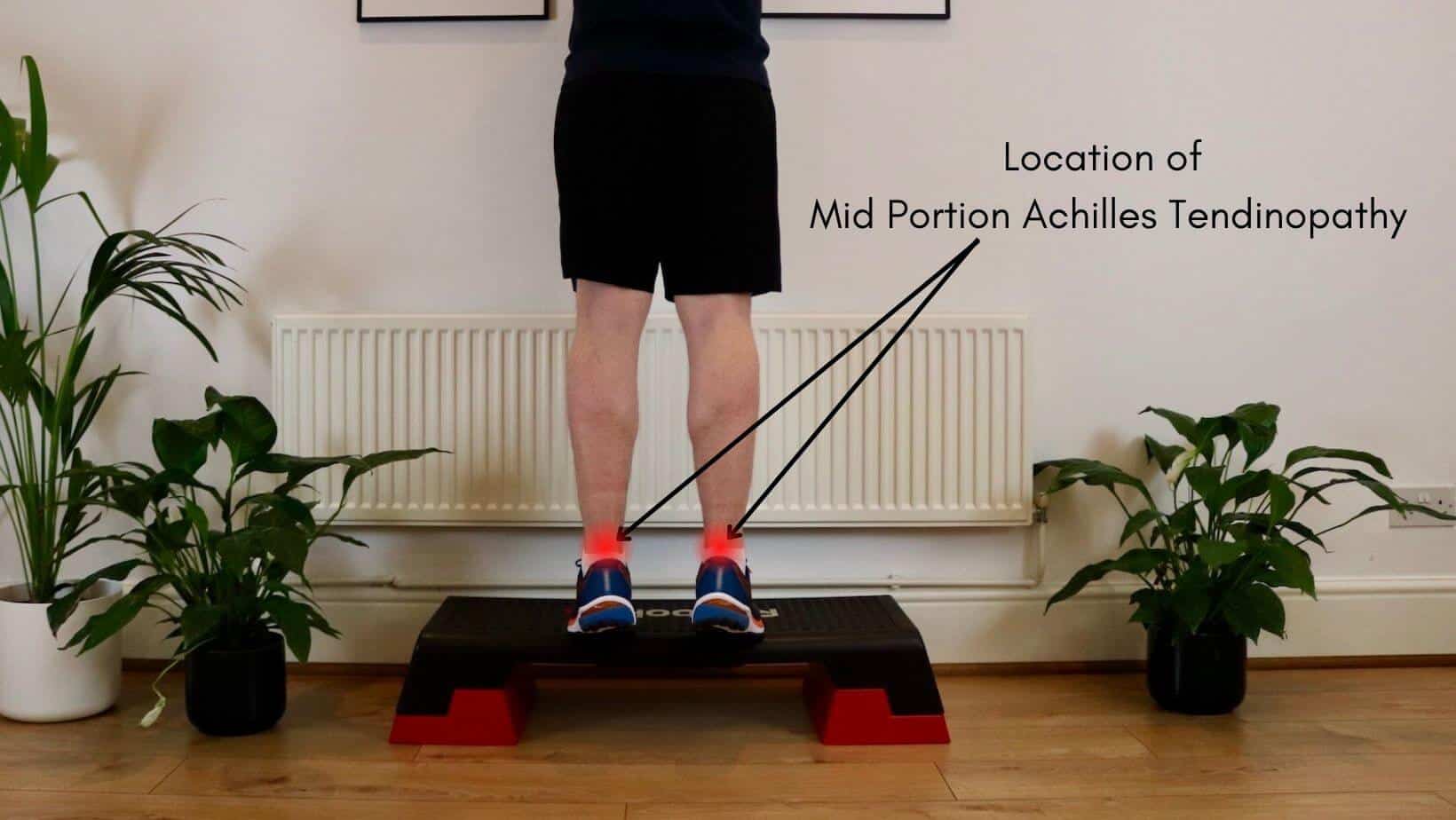
Your Achilles Tendon is located on the back of your ankle and is one of the most common running injuries. In the acute stages of Achilles Tendonitis, there may be constant pain when you run that worsens with increased speed or distance. Sub-acute episodes of Achilles Tendonitis are often painful and stiff at the start of a run but begin to ease as it warms up with increased pain levels after running.
Diagnosis and treatment for Achilles Tendonitis are well placed under a physical therapist’s care. Treatment includes strengthening exercises, a heel raise, a running assessment and a modified running regime.
Related Article: Best Running Shoes for Achilles Tendonitis
The Posterior Tibial Tendon is located on the medial ankle and supports the foot’s medial arch. If it becomes overloaded, it develops Posterior Tibial Tendonitis, resulting in pain that hurts the inner ankle when running. Posterior Tibial Tendonitis can be painful at the start of a run and ease as your warm-up, or there may be inner ankle pain as the conditions deteriorate.
Treatment of Posterior Tibial Tendonitis includes insoles, stability trainers, strengthening exercises, and ankle mobility stretches.
Related Article: Best Treatment for Posterior Tibial Tendonitis
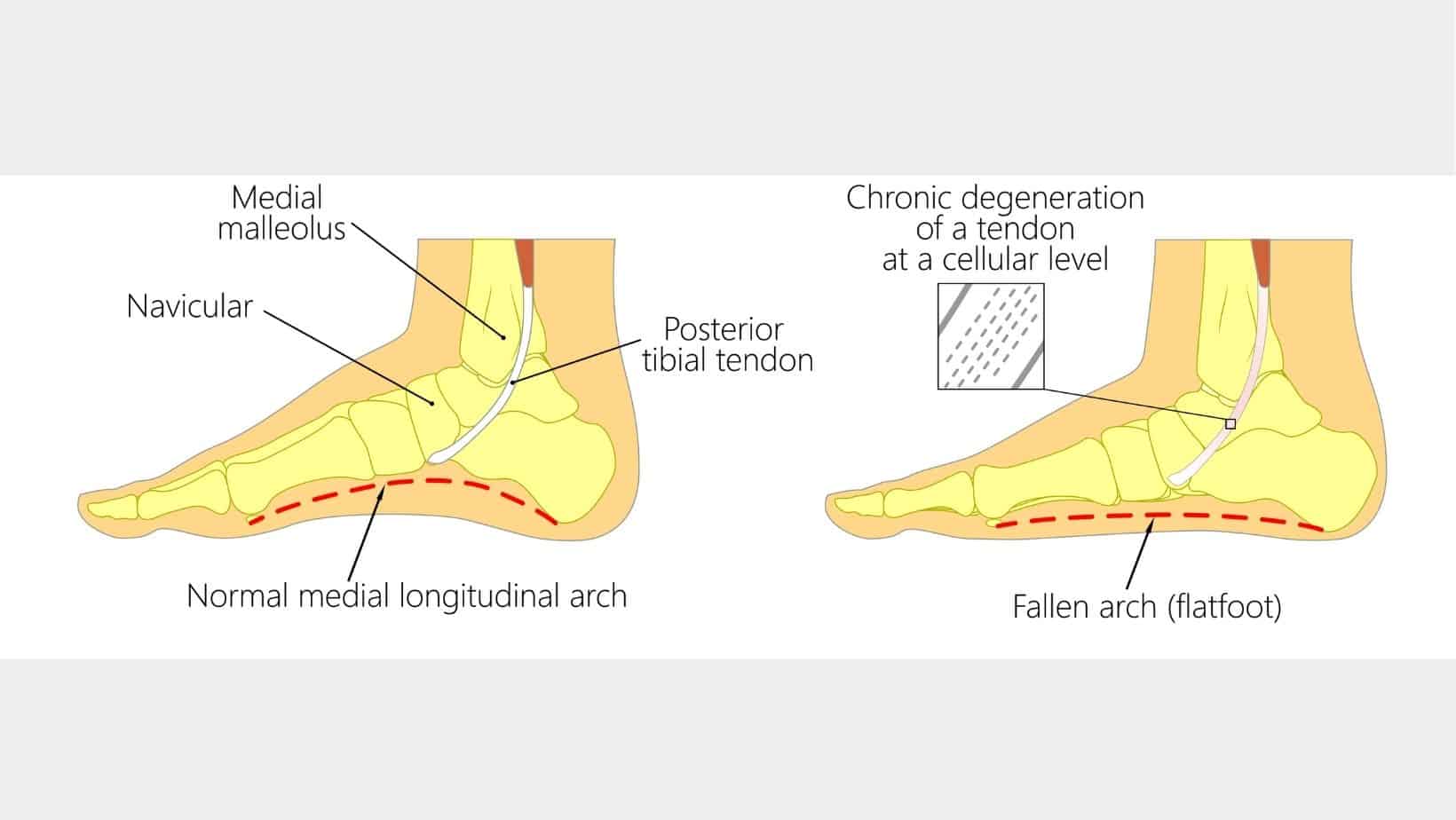
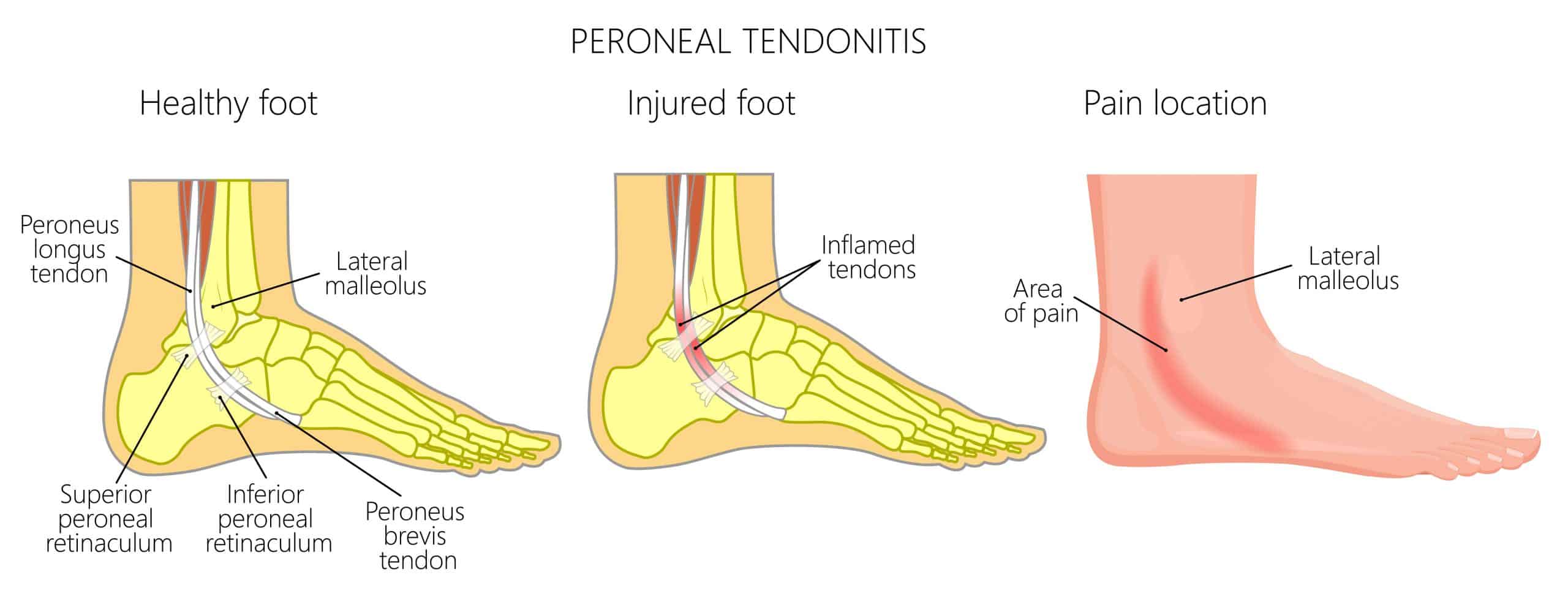
There are 3 Peroneal Muscles on the outside of your ankle, attaching to the base of the outside of your foot. They act as a critical stabiliser of your ankle when running and help to turn your foot outwards. If they become overloaded through a sudden increase in running volume or running on a camber, they can develop Peroneal Tendonitis. Peroneal Tendonitis causes outer ankle pain when running and often worsens with increased speed or running on uneven surfaces.
Rehabilitation for Peroneal Tendonitis is based around strengthening exercises, correct running shoes, ankle mobility exercises, balance exercises and orthotics. If this is unsuccessful, shockwave therapy can be a viable treatment solution.
Related Article: Best Exercises for Peroneal Tendonitis
The ankle joint consists of the fibula, tibia and talus bones and on the end of each bone is complex, shiny cartilage that helps protect the bones from impact. When running, especially on uneven surfaces or if you have an unstable ankle, there can be increased pressure or forces on specific aspects of the ankle joint. When running, this is most often the front (anterior) of the ankle and can lead to an overload that results in an Anterior Ankle Impingement (Footballer’s Ankle).
Symptoms include pain in the front of the ankle that hurts more when running uphill on uneven surfaces. Treatment includes icing, anti-inflammatories, and balance and stability exercises, while a heel raise works well to offload the front of the ankle joint.
Related Article: FAQs about Anterior Ankle Impingement
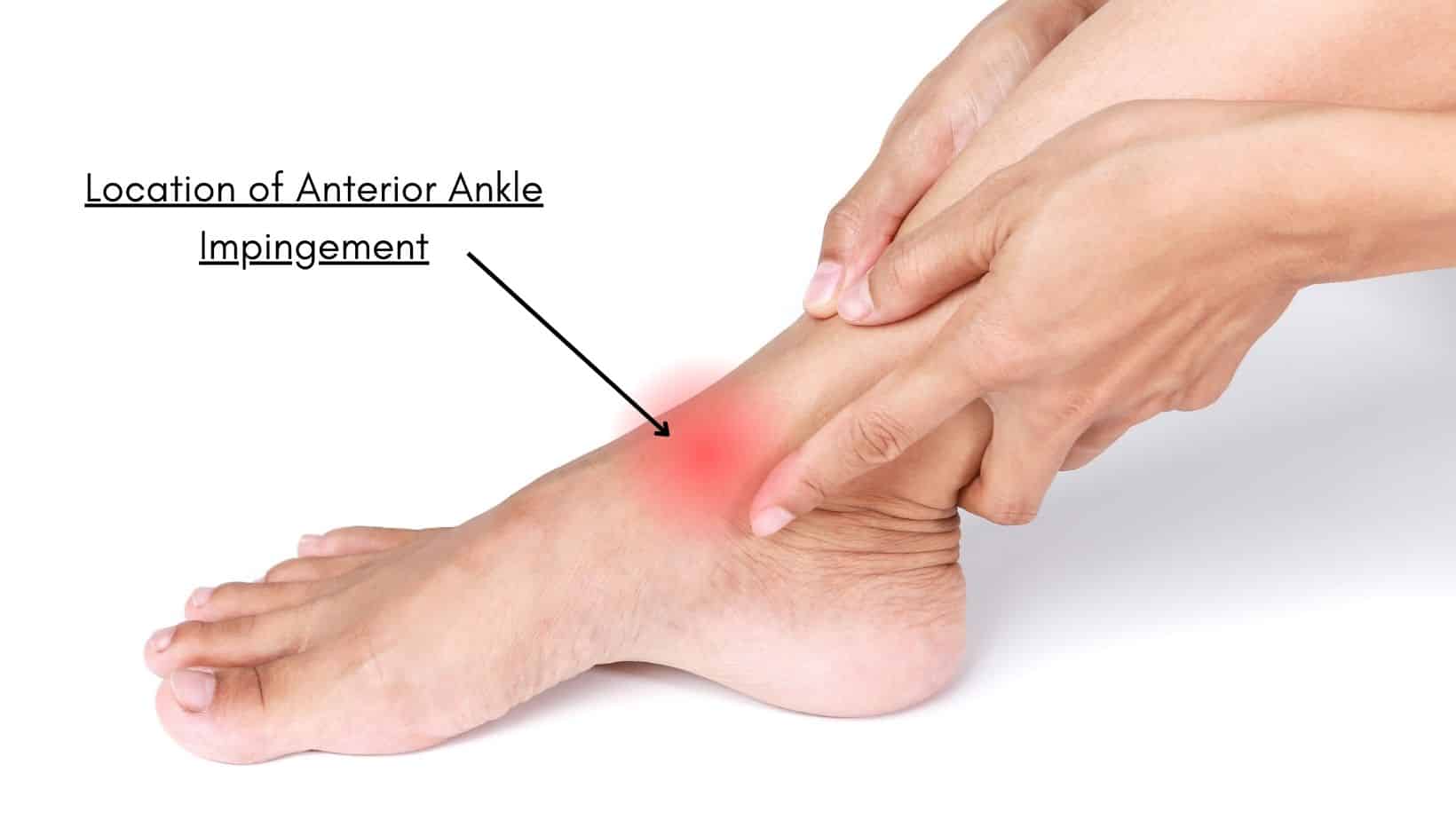
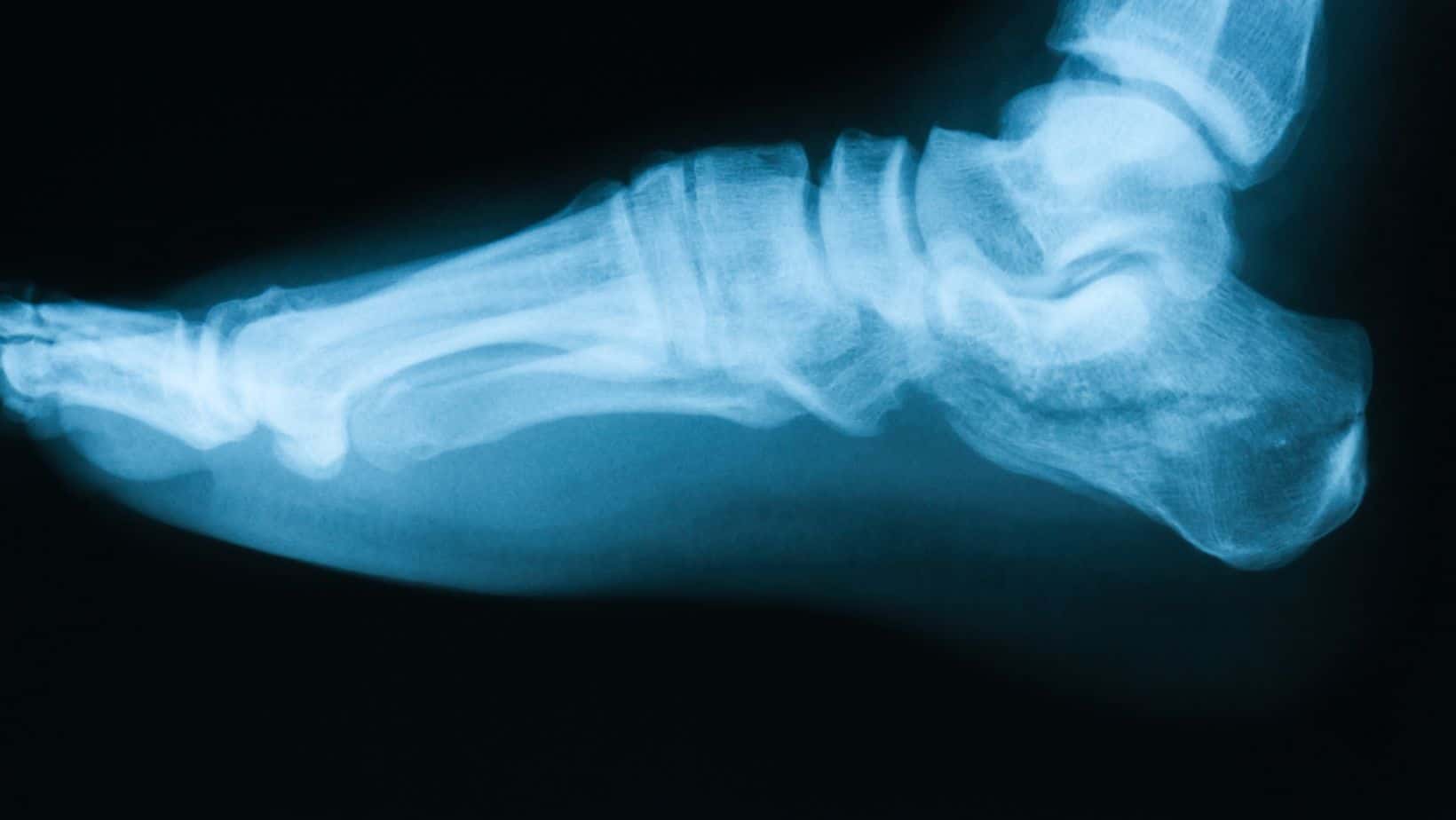
The calcaneus bone is also known as the heel bone, and for individuals who are heel strikers, when running, this bone absorbs high levels of force. If the calcaneus bone becomes overloaded, it can develop into a Calcaneus Stress Fracture.
An often misdiagnosed condition that can be confused with Insertional Achilles Tendonitis or Plantar Fasciitis, a calcaneus fracture is painful when running on the back of the ankle, and pain worsens with continued activity.
Treatment involves 4-6 weeks in a walker boot and 6 weeks of Physical Therapy.
Related Article: Insertional Achilles Tendonitis
This is not medical advice. We recommend a consultation with a medical professional such as James McCormack. He offers Online Physiotherapy Appointments for £45.
Related Article: Causes of Calf Pain Running